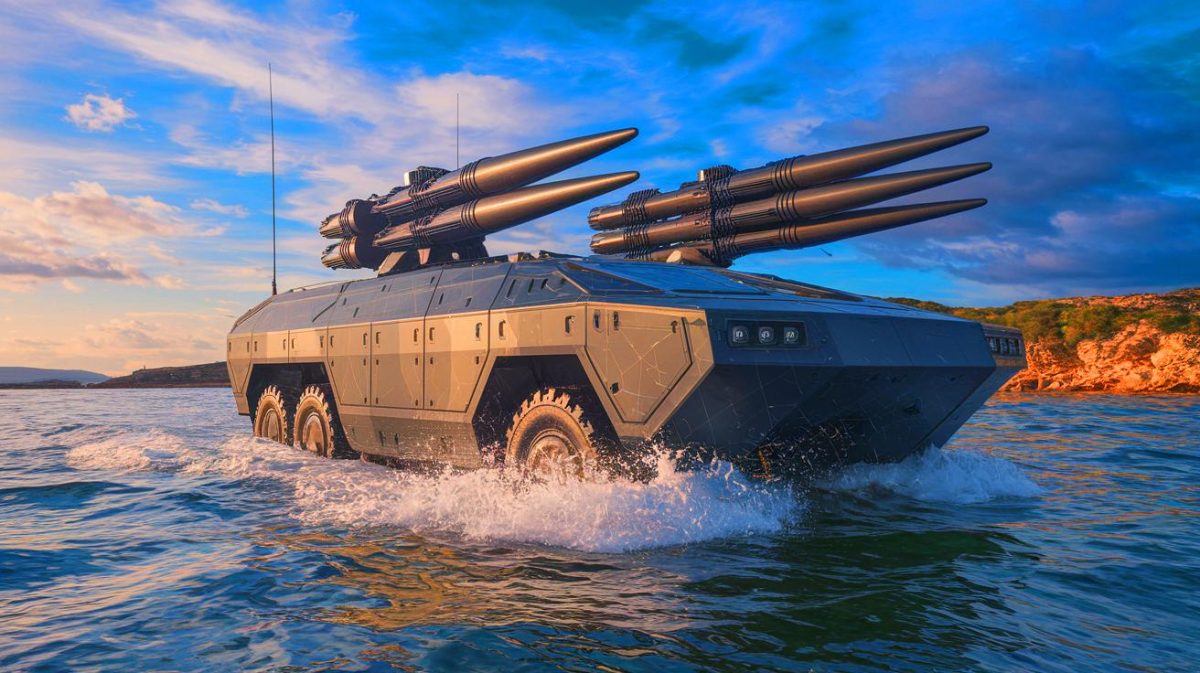| IN A NUTSHELL |
|
China’s military advancements have always been a subject of global attention, and their latest development is no exception. The People’s Liberation Army (PLA) has commenced trials of a groundbreaking amphibious anti-tank missile system. This innovative platform integrates high-precision strike capabilities with armored mobility, signaling a shift in China’s coastal warfare strategies. As the world watches these developments, the implications of such a powerful system could reshape the balance of military power in contested regions.
Transformation in Coastal Warfare Doctrine
The introduction of this new anti-tank platform marks a significant evolution in China’s coastal defense strategies. Previously, the PLA relied on mechanized deployments of anti-tank guided missile systems. However, this new system represents a departure towards a multi-domain amphibious strike capability. The platform is equipped with a twelve-cell launcher system specifically designed for the HJ-10 missile, an advanced anti-tank guided missile with a top-attack flight profile.
The HJ-10 missile, traditionally mounted on the ZBD-04A vehicle, known as the AFT-10, now finds a more protective and mobile home on the ZTD-05 amphibious assault vehicle. Designed by Norinco, the ZTD-05 offers enhanced armor protection and superior hydrodynamic performance, making it ideally suited for operations in shallow coastal areas and rivers. This capability supports quick landings and offshore missile launches, underlining the PLA’s increasing focus on powerful amphibious systems.
Such developments suggest preparations for challenging landings or operations aimed at controlling strategic islands, possibly including Taiwan. With China’s growing emphasis on joint operations and A2/AD strategies, this platform could become a critical component of force projection across narrow seas.
Impressive Missile Capacity and Mobility
Unlike most Western ATGM systems that prioritize mobility with fewer missiles, the Chinese platform emphasizes launching multiple missiles simultaneously. Each pod carries six HJ-10 missiles, allowing the platform to launch a total of twelve missiles. This capability enables saturation attacks on target areas, effectively overcoming modern tank defenses.
Supported by drones and advanced radar systems, this platform can efficiently neutralize armored units and fortified positions. The ZTD-05 Amphibious Assault Vehicle, weighing approximately 57,000 pounds, operates with a crew of three. Its main armament includes a standard 105mm rifled gun, although configurations may vary.
With a top speed of about 40 mph on land and 28 mph in water, the vehicle’s twin waterjet propulsion system ensures versatility across terrains. Its robust protection system, featuring modular armor and an NBC defense mechanism, safeguards the crew in hazardous environments. The pairing of the ZTD-05 with the HJ-10 missile, equipped with advanced guidance systems and a tandem HEAT warhead, extends operational range and effectiveness against explosive reactive armor.
Strategic Implications and Global Response
The deployment of this new amphibious platform is likely to have far-reaching implications for regional security dynamics. Its design reflects a strategic shift towards ensuring dominance in contested maritime regions, particularly in scenarios involving island territories. This development may prompt neighboring countries and global powers to reassess their defense postures in response to China’s growing military capabilities.
Moreover, the platform’s ability to perform saturation attacks poses a significant challenge to existing defense systems, necessitating advancements in countermeasures. As China’s defense strategy evolves to include more sophisticated and versatile systems, the global military landscape continues to transform.
In this context, international observers are keenly watching how these developments will influence regional power balances and potential diplomatic negotiations. The integration of advanced technologies into China’s military arsenal underscores an ongoing commitment to modernizing and expanding its defense capabilities.
Technological Advancements and Future Prospects
The HJ-10 missile system’s incorporation into the ZTD-05 platform highlights China’s focus on leveraging technology to enhance its military prowess. The missile’s fire-and-forget technology, combined with radar and infrared imaging, ensures precise targeting and efficient engagement of armored threats. Its extended range, surpassing similar systems like the Javelin, provides a tactical advantage in various combat scenarios.
As China continues to innovate and refine its military technology, the global defense industry is likely to see increased competition and collaboration. The PLA’s efforts in developing multi-domain platforms reflect a strategic intent to maintain a competitive edge in modern warfare. Such advancements are not only reshaping China’s military capabilities but also influencing global defense trends.
The continued evolution of this technology raises questions about the future of warfare and the role of amphibious capabilities in securing strategic interests. How will these developments influence international military strategies and alliances in the coming years?
Did you like it? 4.5/5 (26)









Wow, China’s really stepping up their game! What do you think this means for Taiwan? 🤔
This is fascinating, but how does it compare to Western military technologies? 🇺🇸 vs 🇨🇳
Great article! Thanks for the details on the ZTD-05. 🚀
Skeptical much… Is this just propaganda or the real deal?
Where is China getting all the money? What is its budget in a year?
Can it really operate effectively in swamps? That sounds challenging. 🌧️